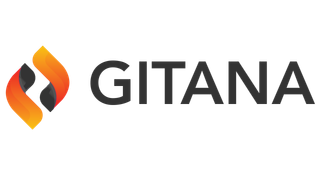Found 386 results for "docs api functions"
The search executed in 0.0011 seconds. That's fast.

|
Gitana 4.0 / Developers / Frameworks / AngularJSDocumentation Reference Easily connect your Angular app to Cloud CMS with step-by-step API Key setup and a bookstore example site. (Gitana 4.0)
Score: 1.3465
|

|
Gitana 4.0 / Developers / Frameworks / ReactDocumentation Reference Learn how to connect React apps to Cloud CMS with guides, API keys setup, and a bookstore example site. (Gitana 4.0)
Score: 1.3465
|

|
Gitana 4.0 / Developers / Frameworks / Vue.jsDocumentation Reference Explore Vue.js integration with Cloud CMS using step-by-step guides, sample apps, and API setup tutorials. Build seamlessly! (Gitana 4.0)
Score: 1.3465
|

|
My UI modules aren't deploying. What should I check?Support Article Ensure successful deployment of Cloud CMS UI modules by checking server connections, logs, and IP whitelisting. (Support 1.0)
Score: 1.3388
|

|
Automation - GitanaWeb Page Automation - Gitana Status Releases Support Platform Platform Manage, collaborate, search and distribute your highly-structured content across branches, versions and workflow-driven lifecycle. Cloud CMS Create, Approve and Publish quality content to production on-time. Easy editorial and workflow tools let your best work reach your customers. Automation Automate your content creation and approval flows while taking advantage of AI services to enhance and curate content. Publishing Source and del
Score: 1.3379
|

|
Gitana 3.2 / Guide / Guide / Docker / Container Services / Amazon ECSDocumentation Reference Amazon ECS offers seamless container orchestration with AWS integrations, ideal for deploying and scaling apps efficiently. (Gitana 3.2)
Score: 1.335
|

|
Gitana 3.2 / Guide / Guide / Docker / KitsDocumentation Reference Download pre-built Cloud CMS Docker kits for quick starts and custom scenarios, optimized from customer feedback. (Gitana 3.2)
Score: 1.3344
|

|
Gitana 4.0 / Self Managed / KitsDocumentation Reference Download pre-built Docker kits from Cloud CMS for efficient setups, based on real user feedback, to start your projects quickly. (Gitana 4.0)
Score: 1.3344
|

|
Supporting large binary filesSupport Article Efficiently store and manage large binary files with Cloud CMS, leveraging S3 and CDN for optimal performance and scalability. (Support 1.0)
Score: 1.3221
|

|
Gitana 3.2 / Guide / Guide / Docker / Configuration / UI ServerDocumentation Reference Cloud CMS UI Server: Extensible Node.js app for a robust editorial experience, integrates with the Cloud CMS API. (Gitana 3.2)
Score: 1.3174
|

|
Gitana 3.2 / Guide / Guide / DockerDocumentation Reference Efficiently run Cloud CMS on-premise or in private clouds with Docker's production-ready microservices. (Gitana 3.2)
Score: 1.3128
|

|
Gitana 3.2 / Guide / Guide / Single Sign On (SSO) / KeycloakDocumentation Reference Learn to set up JBoss Keycloak as an SSO provider with Cloud CMS using SAML or JWT for seamless identity management. (Gitana 3.2)
Score: 1.3101
|

|
Gitana 4.0 / Content Engine / Single Sign On (SSO) / KeycloakDocumentation Reference Discover how to configure Cloud CMS SSO with JBoss Keycloak for seamless identity and access management integration. (Gitana 4.0)
Score: 1.3101
|

|
Gitana 3.2 / Guide / Guide / Docker / Container Services / KubernetesDocumentation Reference Explore Kubernetes for automating containerized applications with Gitana SDK integration and cloud versatility. (Gitana 3.2)
Score: 1.3034
|

|
Gitana 3.2 / Guide / Guide / Deployment / Deployment Handlers / Remote Deployment HandlerDocumentation Reference Efficiently deploy packages to remote servers with secure API authentication management. (Gitana 3.2)
Score: 1.3013
|

|
Gitana 4.0 / Content Engine / Deployment / Deployment Handlers / Remote Deployment HandlerDocumentation Reference Deploy packages remotely with the Cloud CMS API and authenticate using user API keys for seamless integration. (Gitana 4.0)
Score: 1.3013
|

|
Gitana 4.0 / Self Managed / DockerDocumentation Reference Optimize your Cloud CMS with Docker for seamless on-premise and cloud deployments, embracing efficient microservices. (Gitana 4.0)
Score: 1.3012
|

|
Gitana 3.2 / Guide / Guide / Integrations / ActiveMQDocumentation Reference Optimize your Cloud CMS integration with high-performance ActiveMQ, supporting STOMP protocol for seamless message queuing. (Gitana 3.2)
Score: 1.2958
|

|
Gitana 4.0 / Content Engine / Integrations / ActiveMQDocumentation Reference Optimize your application's messaging with ActiveMQ and the Cloud CMS Application Server for scalable performance. (Gitana 4.0)
Score: 1.2958
|

|
Gitana 3.2 / Guide / Guide / Application Server / Authentication / Providers / GitHubDocumentation Reference Cloud CMS integrates with GitHub for seamless authentication and single-sign-on (SSO) solutions. (Gitana 3.2)
Score: 1.2905
|

|
Gitana 3.2 / Guide / Guide / Application Server / Authentication / Providers / GoogleDocumentation Reference Integrate Google authentication with Cloud CMS for seamless web and mobile app access. (Gitana 3.2)
Score: 1.2905
|

|
Gitana 3.2 / Guide / Guide / Application Server / Authentication / Providers / TwitterDocumentation Reference Enable Twitter authentication and SSO seamlessly with Cloud CMS for your apps and interfaces. (Gitana 3.2)
Score: 1.2905
|

|
Gitana 4.0 / Developers / Application Server / Authentication / Providers / GoogleDocumentation Reference Integrate Google authentication and SSO with Cloud CMS for seamless web and mobile app experiences. (Gitana 4.0)
Score: 1.2905
|

|
Gitana 3.2 / Guide / Guide / Binary Files / File System Binary StorageDocumentation Reference Optimize binary storage with Cloud CMS for reliable file access and seamless on-premise configuration. (Gitana 3.2)
Score: 1.2894
|

|
Gitana 4.0 / Content Engine / Platform / Binary Files / File System Binary StorageDocumentation Reference Optimize file storage with Cloud CMS: robust binary management, flexible provider configurations, and seamless API server integration. (Gitana 4.0)
Score: 1.2894
|
